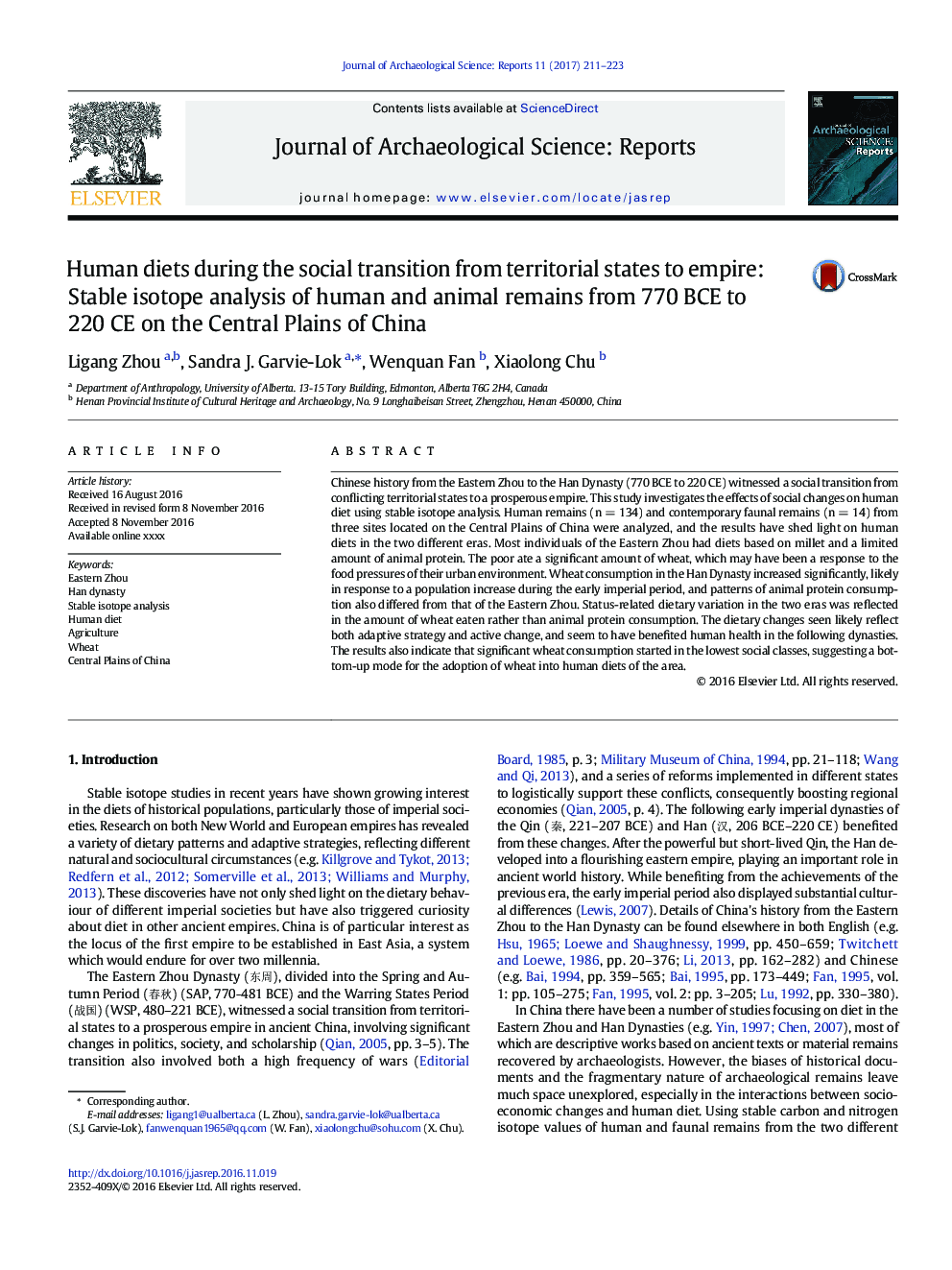| Article ID | Journal | Published Year | Pages | File Type |
|---|---|---|---|---|
| 5112560 | Journal of Archaeological Science: Reports | 2017 | 13 Pages |
Abstract
Chinese history from the Eastern Zhou to the Han Dynasty (770 BCE to 220 CE) witnessed a social transition from conflicting territorial states to a prosperous empire. This study investigates the effects of social changes on human diet using stable isotope analysis. Human remains (n = 134) and contemporary faunal remains (n = 14) from three sites located on the Central Plains of China were analyzed, and the results have shed light on human diets in the two different eras. Most individuals of the Eastern Zhou had diets based on millet and a limited amount of animal protein. The poor ate a significant amount of wheat, which may have been a response to the food pressures of their urban environment. Wheat consumption in the Han Dynasty increased significantly, likely in response to a population increase during the early imperial period, and patterns of animal protein consumption also differed from that of the Eastern Zhou. Status-related dietary variation in the two eras was reflected in the amount of wheat eaten rather than animal protein consumption. The dietary changes seen likely reflect both adaptive strategy and active change, and seem to have benefited human health in the following dynasties. The results also indicate that significant wheat consumption started in the lowest social classes, suggesting a bottom-up mode for the adoption of wheat into human diets of the area.
Related Topics
Social Sciences and Humanities
Arts and Humanities
History
Authors
Ligang Zhou, Sandra J. Garvie-Lok, Wenquan Fan, Xiaolong Chu,
